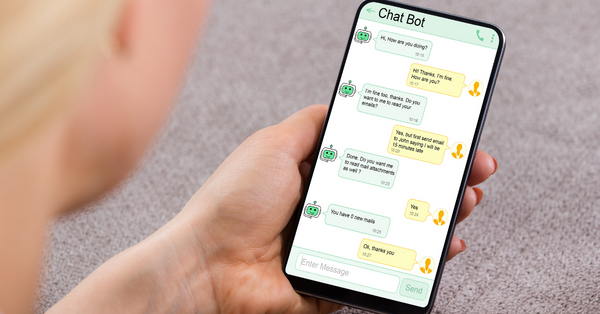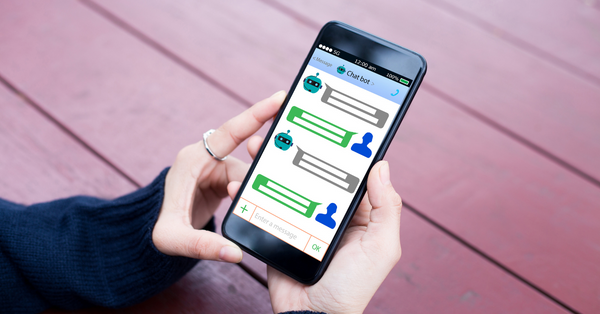- What is Affiliate Marketing and How Does It Work? - July 19, 2024
- Unlock Success in Business with Jessica’s Marketing Lectures - July 12, 2024
- What Does the 2,500-page Google Leak Means for SEO? - June 27, 2024
Enhancing Customer Engagement with Chatbots
Chatbots have emerged as a revolutionary tool for transforming customer engagement strategies. These intelligent virtual assistants are designed to interact with customers in a conversational manner, using artificial intelligence (AI) and natural language processing (NLP) capabilities.
Chatbots have revolutionized customer engagement strategies by providing 24/7 availability, personalized interactions, efficient customer support, scalability, cost-effectiveness, proactive engagement, and data-driven insights.
In this blog we will discuss how chatbots play a crucial role in enhancing customer engagement and delivering exceptional customer experiences.
Understanding Chatbots and Their Benefits

Computer systems known as chatbots are created to mimic human conversation through text or voice interactions. They utilize artificial intelligence (AI) technologies, such as natural language processing (NLP) and machine learning, to understand and respond to user queries or requests in a conversational manner.
AI is a broader field that encompasses NLP and other technologies. In the context of chatbots, AI enables them to learn from interactions, improve over time, and provide more accurate responses. NLP, a subfield of AI, is concerned with how computers and human language interact. It enables chatbots to understand and interpret user input, whether it is in written or spoken form. By combining NLP and AI technologies, chatbots can effectively interpret and understand user input, extract relevant information, recognize intent, analyze sentiment, and generate appropriate responses.
Over time, with machine learning and deep learning, chatbots can continuously improve their performance, providing a more engaging and seamless interaction experience for users.
These are some of the main advantages of employing chatbots:
- 24/7 Availability: Without human assistance, chatbots can offer round-the-clock customer care. This ensures that customers can receive assistance or information at any time, improving customer satisfaction and reducing response time.
- Enhanced Efficiency: Chatbots can handle several customer inquiries at once, which lessens the strain on customer support employees. By automating repetitive and low-level tasks, chatbots free up human agents to focus on more complex issues, leading to increased efficiency and productivity.
- Quick Responses: Chatbots can provide instant responses to customer inquiries, ensuring timely communication. This immediate assistance helps to improve the user experience and build customer trust.
- Personalized Interactions: AI-enhanced advanced chatbots are able to comprehend user preferences and offer tailored recommendations or solutions. By analyzing customer data and interaction history, chatbots can offer tailored experiences, leading to higher engagement and customer satisfaction.
- Scalability: Businesses may handle a high volume of consumer questions with chatbot technology without adding more staff. As customer requests increase, chatbots can handle the load seamlessly, ensuring a consistent level of support.
- Cost Savings: Implementing chatbots can result in cost savings for businesses. By automating customer support processes, companies can reduce the number of support agents required and lower the operational costs associated with staffing.
- Data Collection and Analysis: Chatbots can collect valuable user data during conversations, providing businesses with insights into customer behavior, preferences, and pain points. This data can be utilized for marketing strategies and informed decision-making.
- Enhanced User Engagement: Chatbots provide a conversational and interactive experience for users, making interactions more engaging and enjoyable. This can lead to higher user engagement and brand loyalty.
It is important to consider the limitations of chatbots as well. While they excel at handling routine inquiries, complex or nuanced issues may still require human intervention. Additionally, chatbots can sometimes misinterpret user input, leading to incorrect or irrelevant responses.
Personalized Conversations at Scale

Personalized conversations at scale require businesses to use data and analytics, segment their audience, leverage AI and machine learning, use dynamic content, provide omni-channel support, and humanize conversations. By adopting these strategies, businesses can deliver personalized experiences that improve customer engagement, satisfaction, and conversions.
Chatbots enable personalized interactions for every user by leveraging AI and NLP technologies. Through user profiling, contextual understanding, personalized recommendations, adaptive learning, user input interpretation, multichannel personalization, and even emotional intelligence, chatbots can provide personalized interactions for every user. These capabilities create a more tailored and engaging experience, fostering better user engagement, satisfaction, and ultimately, achieving business objectives.
Availability and Instant Responses

It is worth noting that delivering round-the-clock customer support requires careful planning and resource allocation. Utilizing technology such as chatbots, self-service options, and outsourcing support services can help you provide continuous support without overwhelming your internal resources.
Providing round-the-clock customer support can significantly impact customer satisfaction, trust, loyalty, and overall business success. It shows your commitment to meeting customer needs, resolving issues promptly, and ensuring a positive customer experience around the clock.
Immediate responses are crucial in many industries where safety, security, reputational damage, and customer satisfaction are at stake. This includes the healthcare industry, emergency services like police, fire rescue, and hospital ambulances, e-commerce businesses, travel agencies, hotels, and airlines. In these and other industries, immediate responses can make a significant difference to the customer experience, safety, and overall business success. It’s important to establish effective communication channels and employ modern technologies and tools to ensure prompt and reliable service to users around the clock.
Increasing User Engagement on Websites

Chatbots can play a crucial role in guiding users through a website’s content and features by providing personalized assistance and interactive communication. To implement chatbot-guided user assistance on a website, programming languages like Python, JavaScript, or frameworks like Node.js can be used in combination with AI chatbot platforms or libraries like Dialogflow, Microsoft Bot Framework, or Rasa. These tools provide the necessary NLP capabilities and integration frameworks to build and deploy chatbots that can effectively guide users through a website’s content and features.
By actively engaging with your website visitors and providing them with relevant and compelling content, you can create a more interactive and personalized experience, reducing bounce rates and increasing visitor retention. Remember to continuously monitor and analyze website performance to identify areas for improvement and make data-driven decisions.
Nurturing Leads and Facilitating Sales

Chatbots can be a valuable tool for qualifying leads and gathering information about potential customers by asking relevant questions. Here are some ways chatbots can be used to qualify leads:
- Lead Capture: The chatbot can start by collecting basic information from the visitor, such as their name, email address, and phone number.
- Qualifying Questions: The chatbot can then ask qualifying questions such as budget, timeline, and project scope to determine if the visitor is a good fit for your services.
- Product/Service Interest: By asking targeted questions about the visitor’s interests and preferences, the chatbot can determine which product or service the visitor is most interested in.
- Decision Maker Identification: By asking who the decision-makers are in the visitor’s organization, the chatbot can determine who to direct marketing efforts towards and what communication should look like.
- Scheduling and Reminder: Chatbots can be programmed to help with scheduling and set reminders for follow-up contact.
- Personalization: Chatbots can be programmed to recognize past interactions with the visitor and tailor their communication and recommendations accordingly.
- Scoring: By keeping track of the visitor’s engagement, the chatbot can score them according to their level of interest and prioritize follow-up accordingly.
By using chatbots to qualify leads, you can streamline the process of gathering information about potential customers and ensure that your sales team focuses on leads that are most likely to convert. Through the relevant questions that chatbots ask, you can gather information that will help you tailor your marketing and acquisition strategies to suit the interests, preferences, and needs of potential clients.
Best Practices for Implementing Chatbots

- Define your goals: Before implementing a chatbot, it is essential to define your goals and what you hope to achieve. Are you looking to provide customer support, collect leads, increase sales, or something else? Your goals will determine the chatbot’s functionality, design, and overall implementation.
- Design user-friendly interfaces: Chatbot interfaces should be user-friendly, engaging, and easy to navigate. Features like quick replies, personalized recommendations, and a conversational tone help create a positive user experience. It is essential to tailor your chatbot’s design to suit your target audience and industry.
- Test and iterate: Continuous testing and iteration are crucial to improving your chatbot over time. Monitor user interactions, review feedback, and track metrics such as engagement rates and conversion rates to identify areas for improvement.
- Integrate with existing systems: Chatbots should integrate seamlessly with your existing systems such as customer relationship management (CRM) software, marketing automation tools, or e-commerce platforms. Integration ensures a smooth user experience across different touchpoints.
By following these tips, you can create an effective chatbot that improves the user experience, drives engagement, and helps you achieve your business objectives.
Conclusion
With chatbots, users can communicate with a computer program that assists them in finding answers quickly or have a conversation with a person (a salesperson or a support representative, for example). The most significant way that a chatbot can affect a consumer relationship is by meeting expectations and responding to requests more quickly.
Staying updated with evolving chatbot technologies is crucial to leverage improved functionality, meet customer expectations, follow emerging trends and best practices, explore integration possibilities, maintain security and compliance, and take advantage of AI advancements. By continuously learning about new developments in chatbot technologies, you can optimize your chatbot’s performance, stay competitive, and deliver exceptional customer experiences in a rapidly evolving landscape.
If you’re interested in implementing chatbots or have any questions, please don’t hesitate to reach out to our agency, SW Marketing & Consulting. We’re excited to discuss your needs, share our expertise, and explore how chatbots can revolutionize your marketing strategy.
